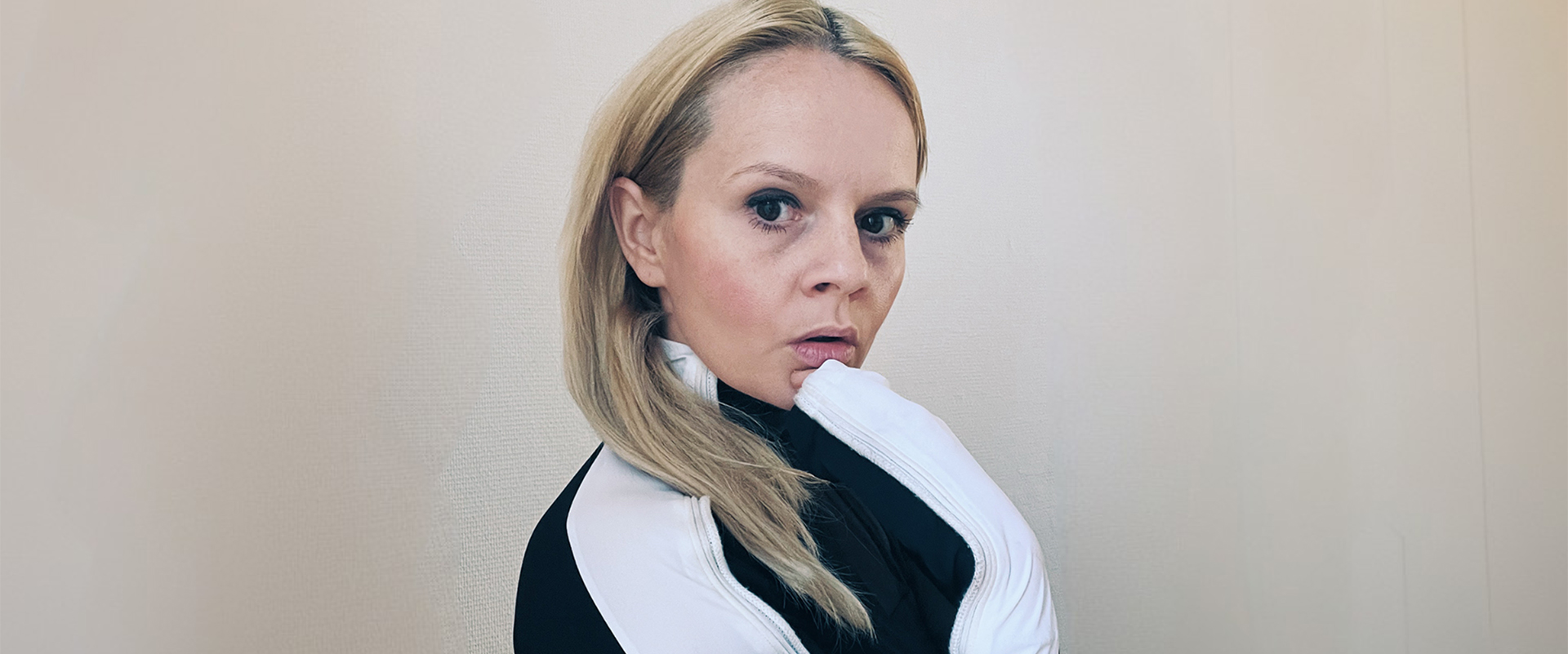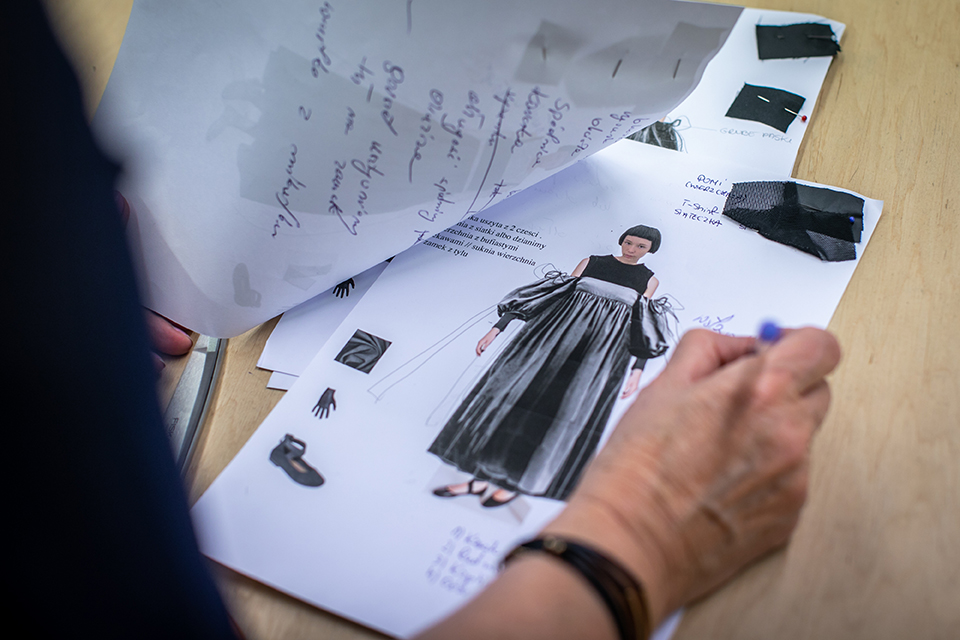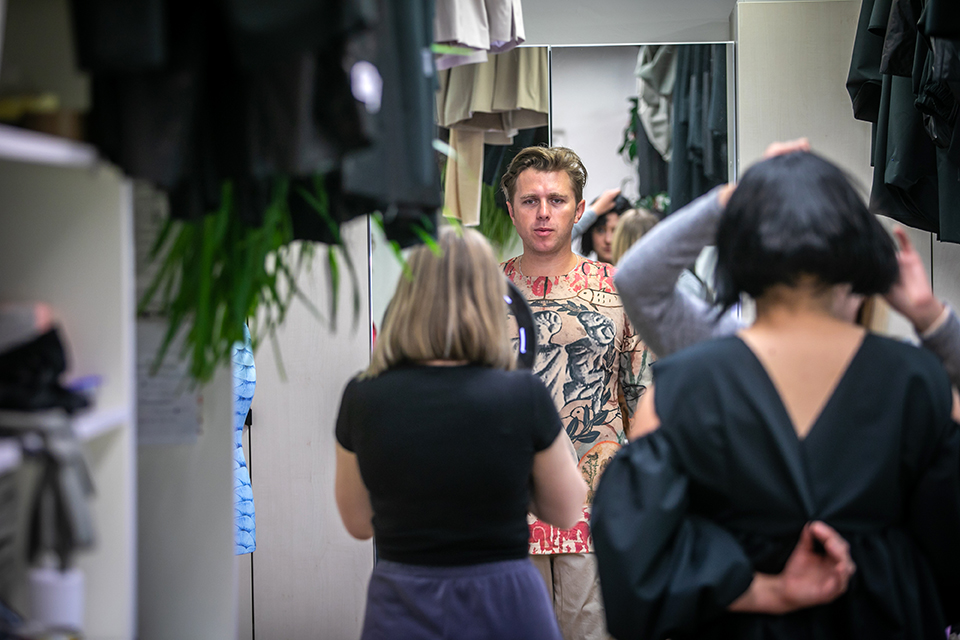 A compromise with myself – in conversation with fashion designer Magdalena Brozda
A compromise with myself – in conversation with fashion designer Magdalena Brozda
Magdalena Brozda comes from Częstochowa, but she has lived and worked in Geneva for years. It was in this Swiss city where she graduated from the University of Art and Design. She has collaborated with avant-garde fashion houses such as A.F. Vandevorst and Hussein Chalayan. Her fashion collection, titled “If I Die Today, Please Call Me Tomorrow,” won the prestigious Audience Award at the 2015 H&M Design Award. For several years, she has successfully created her own accessory brand, WORN OFFICIAL. The production is not based in Asia, but in Switzerland, where Magda Brozda lives. On April 4, the audience at the Musical Theatre in Klaipėda will see the costumes she has designed for the production of “King Roger,” which premiered at the Baltic Opera in 2022.
Were you familiar with the operatic masterpiece by Karol Szymanowski?
I obviously know Szymanowski as a composer, but I must admit I had not come across “King Roger” before. When I received the offer from the Baltic Opera to design the costumes, I started from listening to the music. I did not want to be influenced by an image beforehand. The music evoked in me a sense of strange stagnation, an influx of existential doubts, and a feeling of resistance to rejection or exclusion. Only later did I turn to YouTube to watch a few productions. I then started asking myself thousands of questions about the work process and wondered whether I would be able to meet the challenge. After all, it wasn’t just the costumes for the main characters — Roxana, the Shepherd, and the title character Roger — but also for the chorus made up of women, men, and children, as well as ballet. I was not familiar with the specifics of working in opera, so I didn’t know what to expect.
How did the designs come to life?
At the first meeting with director Romuald Wicza-Pokojski and set designer Hanna Wójcikowska-Szymczak, we had a long discussions about the performance. I heard a sentence that stuck with me: “We will construct a world out of many elements.” We talked about the vision for each character and their personalities. We wondered what their dimensions should be. The word “sect” was mentioned. I was also given a visual outline of the set design: a sandy horizon and a temple. I started looking for references. I read about the Amish and Mormons. I immersed myself in the 1920s, the period when the piece was written. I analysed the construction of garments from that decade, so I could incorporate history and iconography into my designs, especially for things like corsets.
How does the work of Magda Brozda — the fashion designer — differ from that of Magda Brozda — the opera costume designer?
I usually start my projects with the material itself. I pin fabric on a mannequin, mold and adjust it. In the case of opera, the starting point was not material, but conversation and collaboration. After all, it is not a fashion show of my designs being presented on the stage of the Baltic Opera; the costumes are part of a larger whole, the result of hours of conversation and shared vision. This is an opera performance directed by Romuald Wicza-Pokojski, with set design by Hanna Wójcikowska-Szymczak and costumes by me. Visually, all these elements had to come together as one cohesive piece. The director’s aim was for the singers to wear clothes, not costumes. My designs are known for being difficult to wear on a daily basis. So, I had to find a compromise with myself. I started by sketching the characters. I created collages, layering all the elements I considered important. Then, I outlined the final forms. I wanted the proportions to work on stage and to make sure the costumes would be impressive even for those sitting in the last row.
What did we see on stage at the Baltic Opera during the 2022 premiere?
A cohesive vision. A sect of people dressed in minimalist black, united not only by colour but also by identical, short wigs. I worked with volume, puffed sleeves, and shapes that would give the costumes a sculptural quality. I chose light, shiny nylons, similar to those used for parachute production. The challenge was to align with the director’s vision, where physicality plays an important role. I tried to express the theme of seduction through the costumes.
What about the main characters? What costume did you choose for Roxana?
Two long dresses. The first is black, and the second is a light green. Both are constructed with a corset and voluminous sleeves that drape from bare shoulders. Her wig has long black hair and a radical fringe. Roxana is pale, with light makeup, and her face is adorned with large earrings.
Did you design all the costumes in a monochromatic style?
Not all of them. The costumes for the Shepherd and Edrisi stand out in colour. I used patterns from the 12th century, which I found in reproductions of materials from Sicily.
How do you design clothing for an opera singer?
I did not expect there to be so many technical aspects to consider when working on stage. For example, I found out I could not use too much fabric around the neck because it will interfere with the singers’ ability to sing, or that too-heavy earrings could cause problems. The ladies in the sewing workshop also made me aware that the costumes could not rustle too much, while I had based my designs on light nylons. You ask how to design for an opera singer, but in the production, there’s a chorus composed of people of different ages and statures. In “King Roger,” the chorus, the people, play a huge role. They cannot look worse than the soloists; they need to be diverse. I designed several dress models for the women and a few sets for the men.
How did the production process go? Did you personally oversee the costume stitching?
There was no need for that. The Baltic Opera has incredible specialists. Mrs Teresa Biegalska, who runs the opera’s sewing workshop, is a person with enormous experience. In mid-August, we spent the whole day together, sitting over the designs and finalizing every detail. I was surprised she did not work on prototypes, but immediately stitched the costume from the drawn design. During our meeting, we agreed to connect online until the premiere.
Did your experiences of the world of opera benefit you in the fashion world?
Today, there is a lot of talk about the rigid, stereotypical approach to design. The model of the fashion house being ruled by a single artistic director no longer works. The time for teamwork, for combining strengths and creativity, is coming. The younger generation of designers prefers this approach. I teach at Head Geneva (University of Art and Design), and I observe the changes in how our industry is perceived. That’s why working on “King Roger” was so fascinating. The model of blending different visions and competencies will certainly dominate in the future. Dialogue, exchange, artistic compromises, listening to others—these, in my opinion, are the key concepts.
Finally, I would like to ask about your dream collection. Have you already designed it, or is it still ahead of you?
For many years, I have had in my mind garments made exclusively from tights—jackets, dresses, shoes—sculpted from a single monochromatic material. But to create and model them, a hand is needed. Perhaps one day I’ll get an offer from a theatre or an opera house, and that dream will come true.







